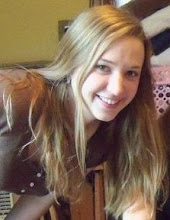Lately in the lab, I've been doing a lot of Immunocytochemistry (ICC). It's a time-consuming process that ends hours later with a few prepared microscope slides to show for your work. The whole point of ICC is to determine whether or not the cells you're working with have certain antigen or receptor. In order to do this, we use antibodies that target specific peptide or protein antigens in the cell.
To start the process, I'll fix the cells I'm going to be testing with a solution of paraformaldehyde. This basically stops everything that's going on in the cell at the moment it's fixed. Then, I'll wash the cells (we grow them on coverslips) twice with a glycine wash to remove the paraformaldehyde. Next, I'll use a permeabilizing solution on the membrane. Finally, it's time to put on the first, or primary antibody, which will go on the cells, in an extremely diluted form (antibodies are extremely expensive...like hundreds of dollars for a quantity that is 1 milliliter or less). This antibody will be left on for the amount of time the researcher chooses, then is rinsed off in preparation for the secondary antibody. When selecting a secondary antibody, it is important to choose one that works with the primary that you used. For example, if the primary antibody was created in a goat, I'd have to choose a secondary antibody that has anti goat IgGs. Attached to the secondary antibody is a fluorophore (compound that makes a molecule fluorescent). This allows us to see whether the antigens exist. After the secondary antibody sits for an hour, the coverslips are washed 3 more times, then mounted onto microscope slides and allowed to dry. Finally, they can be viewed. I use the microscope and camera to view the slides. If the edges of the cells are glowing, this means the cells do indeed have the antigens the primary antibody tested for.
Friday, June 26, 2009
Subscribe to:
Post Comments (Atom)

No comments:
Post a Comment